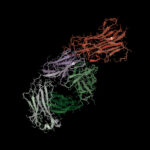Another concern is switching patients who have achieved disease stability on their current biologic therapy. “We need more pharmacovigilance and real-world data so we can see switching patterns, as well as why people switch to a biosimilar from a biologic or other biosimilar, and what happens as a result of these switches,” says Dr. Gewanter.
Such data will have clinical relevance only if the drugs are placed on formulary. For now, PBMs appear to hold the stronger hand over providers. “Changing PBM practice could be a game-changer in the way that drug prices in the U.S. are set, especially for people taking specialty drugs for conditions like chronic autoimmune disease or cancer, and can change the outlook for cost and access to medications,” says Dr. Worthing.
Until and if such changes take place, Dr. Worthing says providers can continue to advocate for their patients by appealing denials of drug preauthorizations, alerting state insurance commissioners of PBM practices that are adversely affecting health decisions between provider and patient, and encouraging patients to advocate for themselves.
For more information on how PBMs work and advocacy efforts to change their practices, see https://atapadvocates.com/the-pbm-problem.
Mary Beth Nierengarten is a freelance medical journalist based in Minneapolis.
| Table 1: Practices by Pharmacy Benefit Managers (PBMs) | |
| Formulary Construction | PBMs basically enter into auction-style bidding with drug manufacturers and are incentivized to choose drugs with the highest rebates (or total price concessions) for favorable placement on formulary tiers.* The PBM pockets a portion of the rebate as profits, so higher rebates yield more profit. To remain competitive and offset the cost of the rebates, drug companies typically increase the list price of the drug. That increased price is passed on to the patient.
Drugs with a higher list price can push other drugs off a formulary or to a higher tier, resulting in patients being forced to switch therapies, adhere to step therapy protocols or make other changes. Frequent formulary changes make continuity of care challenging. |
| Nonmedical Switching | This occurs when a patient is switched from one medication to another for reasons other than efficacy, health or safety. |
| Copay Accumulator Programs | These programs limit drug manufacturer contributions to patients’ copays and out-of-pocket deductible expenses by disallowing the use of money from copay assistance programs toward these expenses. |
| White Bagging | Arrangements between a payer and selected pharmacies to have patients’ medications sent directly to the site of care. This practice can compromise patient safety and create clinical challenges when unpredictable changes occur, such as the need to adjust dosing, a medication not delivered in time for a patient’s appointment or a patient who can’t make it to an appointment. |
*Although “rebate” is commonly used to denote the price concessions that PBMs negotiate with drug manufacturers, it is just one component of the net price, which also includes other discount fees and defined terms. A more accurate term preferred by some is “total price concessions.”



